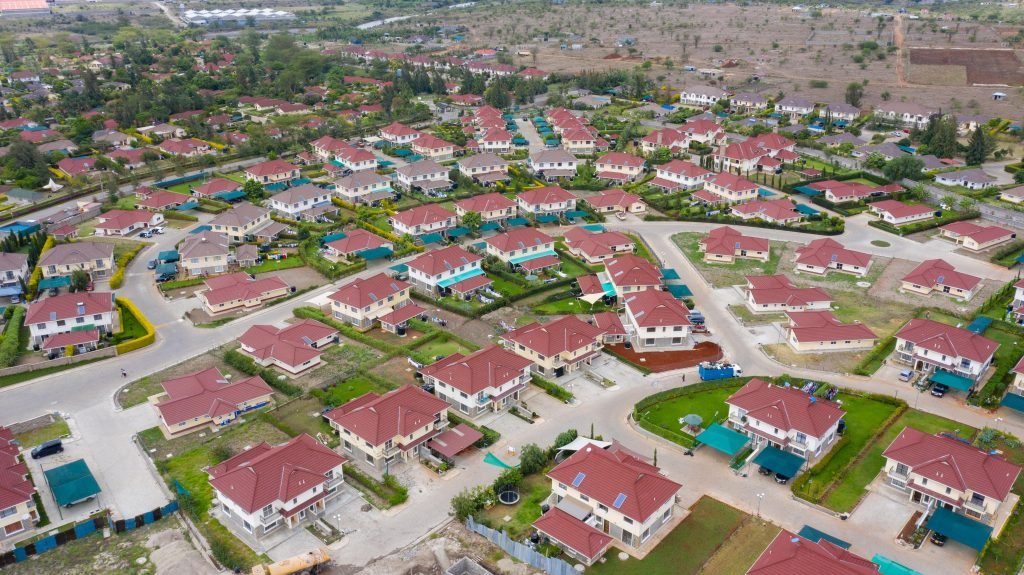It pays to weigh mortgage loan options when planning to purchase a home or property
By Beatrice Wacuka
Finding a property is one thing; making the purchase is quite another. Owning a home is one of the biggest milestones an individual can achieve. With it comes living security and an opportunity to build equity.
But given that property ownership is capital intensive, financing a purchase remains a challenge, which amplifies the need for a solid financing plan. In the Kenyan market, the main purchase options include installment payment plans, cash lump sum and mortgages.
 Download Latest Edition Today For Ksh 150!
Download Latest Edition Today For Ksh 150!
To begin with, a mortgage is a debt facility extended by a financial institution-mortgage lender or bank, to enable an individual purchase a home or property. While it is possible to take out loans to cover the entire cost of a home, it is more common to secure a loan for about 90% of the home’s value.
When choosing a mortgage, borrowers mainly focus on the interest rate and fees they will be charged. However, there is also a need to consider the types of mortgage loan options available. The two commonest mortgage types are fixed-rate and adjustable-rate (also known as variable rate) mortgages.
Fixed-rate mortgages provide borrowers with an established interest rate over a set term of typically 10, 15, or 20 years (which is the “initial period” of the loan). With a fixed interest rate, the shorter the term over which the borrower pays, the higher the monthly payment. Conversely, the longer the borrower takes to pay, the smaller the monthly repayment amount. However, the longer it takes to repay the loan, the more the borrower ultimately pays in interest charges.
The greatest advantage of a fixed-rate mortgage is that the borrower can count on their monthly mortgage payments being the same every month throughout the life of their mortgage, making it easier to set household budgets and avoid any unexpected additional charges from one month to the next.
Secondly, the borrower can lock in lower rates if market interest rates increase significantly; this means the borrower doesn’t have to make higher monthly payments. In addition, lenders often compete with fixed rate specials. On the downside, fixed rates often have limits on how much you can raise repayments or make extra payments without paying charges. For example, if you take a long term package, there is a likelihood that floating rates may drop below your fixed rate but you cannot benefit from the drop.
Finally, if you choose to sell your property and/or break a fixed loan you may be charged a “break fee”.
Fixed-rate loans are ideal for buyers who plan to stay put for many years. A 20-year fixed loan might give you wiggle room to meet other financial needs. However, if you have the appetite for a little risk and the resources and discipline to pay your mortgage off faster, a 10-year fixed loan can save you considerably on interest and cut your repayment period in half.
Nevertheless, it is important to note that, within the Kenyan mortgage market, the maximum loan maturity period reported by the Central Bank of Kenya is 20 years, with the average period of time offered by most lenders being 11.3 years as at 2019.
The other type of mortgage is variable rate mortgages, also referred to as adjustable rate mortgages. Here, interest rates usually change over the life of the loan. In some cases, adjustable-rate mortgages mostly have a fixed rate for an initial period, but after that period expires the rate fluctuates. Increases in market rates and other factors cause interest rates to fluctuate, which changes the amount of interest the borrower must pay, and, therefore, changes the total monthly payment due.
With adjustable rate mortgages, the interest rate is set to be reviewed and adjusted at specific times, for example once a year or once every six months.
Some adjustable rate mortgages products have a rate cap specifying that your monthly mortgage payment cannot exceed a certain amount. In that case, it is important for a borrower to work out the numbers to ensure that they can potentially handle any payment increases up to that point. It is advisable that one does not count on being able to sell their home or refinance their mortgage before their mortgage resets because market conditions and individual finances could change.
On the upside, with the variable rate mortgage, the borrower has more flexibility to make changes without incurring penalties, such as paying off the loan early or changing the loan term. Usually, the borrower will also enjoy a lower fixed rate in the first few years of homeownership as the rates tend to be lower. It is also easier to consolidate other, more expensive debt into floating rate loans by borrowing more.
The primary risk with this type of mortgage is that interest rates may increase significantly over the life of the loan, to a point where the mortgage payments become so high that they are difficult for the borrower to meet. Significant rate increases may even lead to default, meaning the borrower could lose the home through foreclosure.
Adjustable rate mortgages are a solid option if the borrower intends to refinance before the loan resets, as the interest rates for these mortgages tend to be lower than fixed rates in the early years of repayment. One could make significant savings on interest payments in the initial years of homeownership.
It is important to undertake an in-depth comparison of the available deals focusing on all aspects of the loans: type, minimum requirements, applicable interest rates, relevant fees, flexibility of payments and exit penalties.
Writer is a real estate research analyst at Superior Homes Kenya

